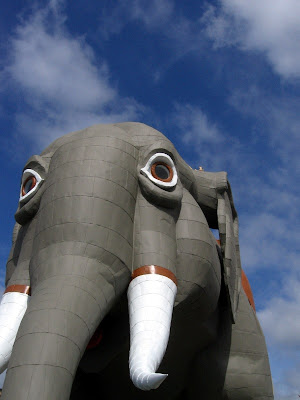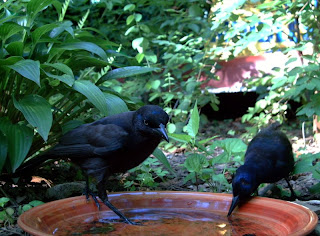Birds and birding news
- A new bird species, Bare-faced Bulbul (Pycnonotus hualon), has been discovered in Laos. This is the first new bulbul species discovered in Asia in 100 years. The bird is distinctive for the lack of feathers on most of its head, an unusual feature among songbirds.
- Last week, 45 domesticated white Ring-necked Doves were released at an event in Queens, turned up starving in front of the Hall of Science, and had to be rescued. If you want a bird release for your wedding or other celebration, make sure to hire a professional bird handler.
- A new birding tower in Graswarder (Germany) is designed to mimic the shape of a perched bird and provide birders with a way to observe the marshes without disturbing the birds. It is a bit more stylish than the typical birding tower.
- Bar-headed Geese are able to fly as high as 30,000 feet to cross the Himalayas because their pectoral muscles use oxygen more efficiently.
- Scientists believe that traditional farming practices benefit the critically-endangered White-Shouldered Ibis.
- The NY Times tells what to do if you find a baby bird.
- A Golden Eagle that was being satellite-tracked by Scottish National Heritage was poisoned to death.
- Several DC-area birders participated in the last World Series of Birding.
- Bell Tower Birding: Beyond the Notebook
- BES Group: Cream-vented Bulbul eating salam fruits
- My Bird Tales: The 'other' blue bird...
- Dawn's Bloggy Blog: House Sparrows taking over the world!
- The summer dead zone in the Gulf of Mexico is smaller than expected but more concentrated. A dead zone is an area of water with very little oxygen due to massive algae blooms that are fed by high volumes of fertilizer runoff.
- Scientists have established an 87 acre reef of American oysters in Virginia's Great Wicomico River, a place that has not had oysters in more than a century. The project may provide a method for reintroducing oysters in other areas of the Chesapeake Bay.
- A German ship is poised to make the first Trans-Arctic commercial voyage from Asia to Europe.
- A weevil species, Ceutorhynchus scrobicollis, may be introduced as a biocontrol for invasive garlic mustard plants. In its native habitat, Ceutorhynchus scrobicollis only eats garlic mustard.
- A town in Kansas is suffering the effects of lead and zinc mining that ended about 40 years ago.
- Ohio Birds and Biodiversity: Pinky the Katydid: June ? - July 29, 2009 RIP
Note: Corey needs your submissions for the next I and the Bird by Sunday night (two days early).

















































